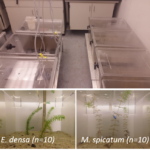WALPA Board news from the President
BY SALLY ABELLA, BOARD PRESIDENT
Hello! We are looking for new Board members! It’s that time of year when we ask new people to step up and help determine WALPA’s direction. A general Board member commitment is two years of monthly meetings (December is often skipped), and attendance at the annual fall conference. A second term can sometimes be added if desired. Please contact Sally at info@walpa.org if you have any interest. Much appreciated!
Calling all lake people to WALPA’s first virtual conference!
CONSIDER SPONSORING THIS UNIQUE FORUM!
BY ROB ZISETTE, PRESIDENT-ELECT AND CONFERENCE COMMITTEE CHAIR
Mark your calendars now for WALPA’s first virtual conference on October 15-17, 2020! The Conference Committee has received more than 30 abstracts and is currently developing program details around our conference theme: Lake Diversity – From Ponds to Reservoirs.
WALPA Statement on Black Lives Matter
 We stand with the Black Lives Matter movement, as it seeks to gain broader recognition of the discrimination and injustice facing not only Black Americans, but also Indigenous peoples and People of Color. We acknowledge that science has historically failed to represent the diversity of faces and voices of our communities. We must fight racial injustices and inequities. We stand with our colleagues in acknowledgement of the necessity of action.
We stand with the Black Lives Matter movement, as it seeks to gain broader recognition of the discrimination and injustice facing not only Black Americans, but also Indigenous peoples and People of Color. We acknowledge that science has historically failed to represent the diversity of faces and voices of our communities. We must fight racial injustices and inequities. We stand with our colleagues in acknowledgement of the necessity of action.
Distinguishing dreams from reality when using eDNA to detect aquatic invasive plants in lakes
LAUREN KUEHNE AND JULIAN OLDEN, FRESHWATER ECOLOGY AND CONSERVATION LAB, UNIVERSITY OF WASHINGTON
 The hope and promise of using environmental DNA (eDNA) – where water samples are analyzed for presence of a species’ DNA – is alluring, and with good reason. Finding the proverbial needle in a haystack is infinitely easier than detecting a fish, invertebrate, or aquatic plant in a lake or river. Unless it’s very abundant, chances are you will miss it! Consequently, tools that can simplify this process, reduce the cost of surveying, or just improve chances of detection are greatly needed. The stakes are even higher in the context of monitoring for invasive species, which require considerable effort and money to manage and control. Aside from prevention, early detection is the best defense, making eDNA a promising and potentially useful tool. In several studies, eDNA has proved equally or sometimes more sensitive than traditional sampling methods, elevating its use to monitor species of high concern such as Asian carp and zebra mussels.
The hope and promise of using environmental DNA (eDNA) – where water samples are analyzed for presence of a species’ DNA – is alluring, and with good reason. Finding the proverbial needle in a haystack is infinitely easier than detecting a fish, invertebrate, or aquatic plant in a lake or river. Unless it’s very abundant, chances are you will miss it! Consequently, tools that can simplify this process, reduce the cost of surveying, or just improve chances of detection are greatly needed. The stakes are even higher in the context of monitoring for invasive species, which require considerable effort and money to manage and control. Aside from prevention, early detection is the best defense, making eDNA a promising and potentially useful tool. In several studies, eDNA has proved equally or sometimes more sensitive than traditional sampling methods, elevating its use to monitor species of high concern such as Asian carp and zebra mussels.











